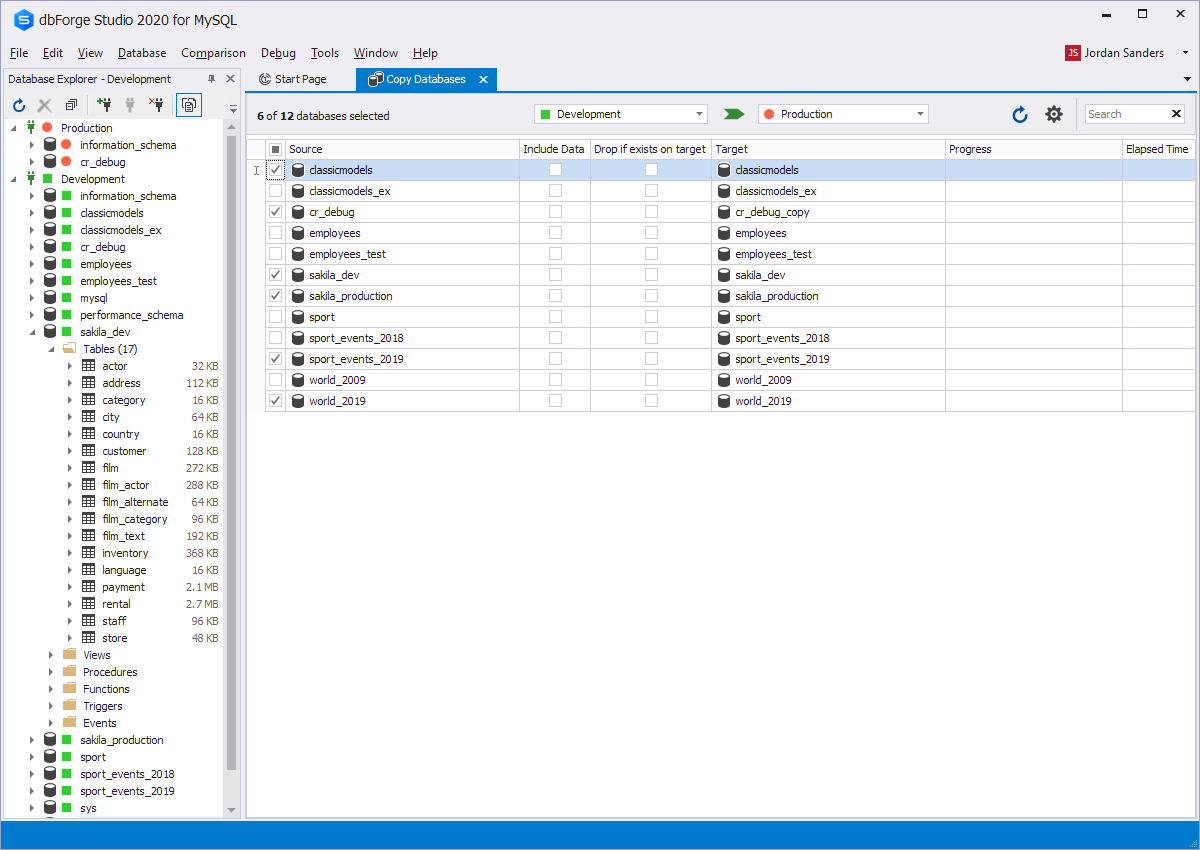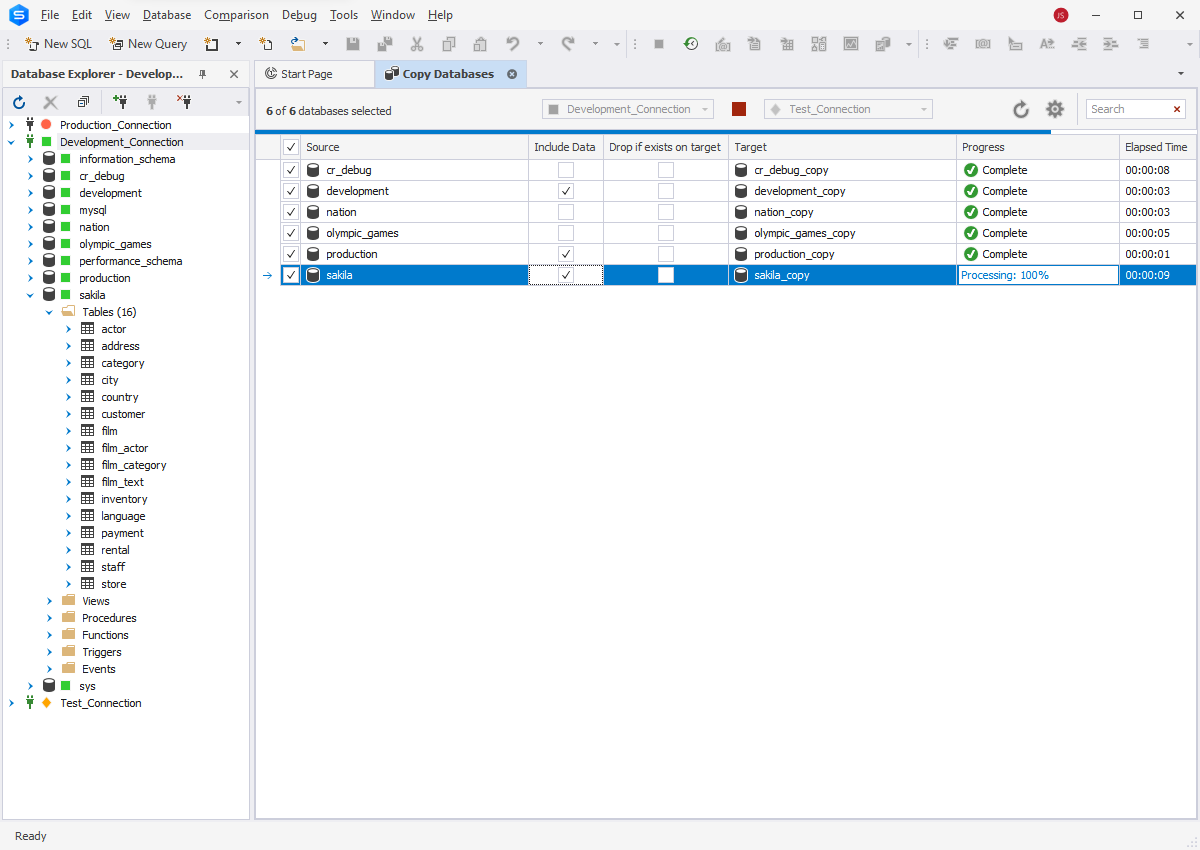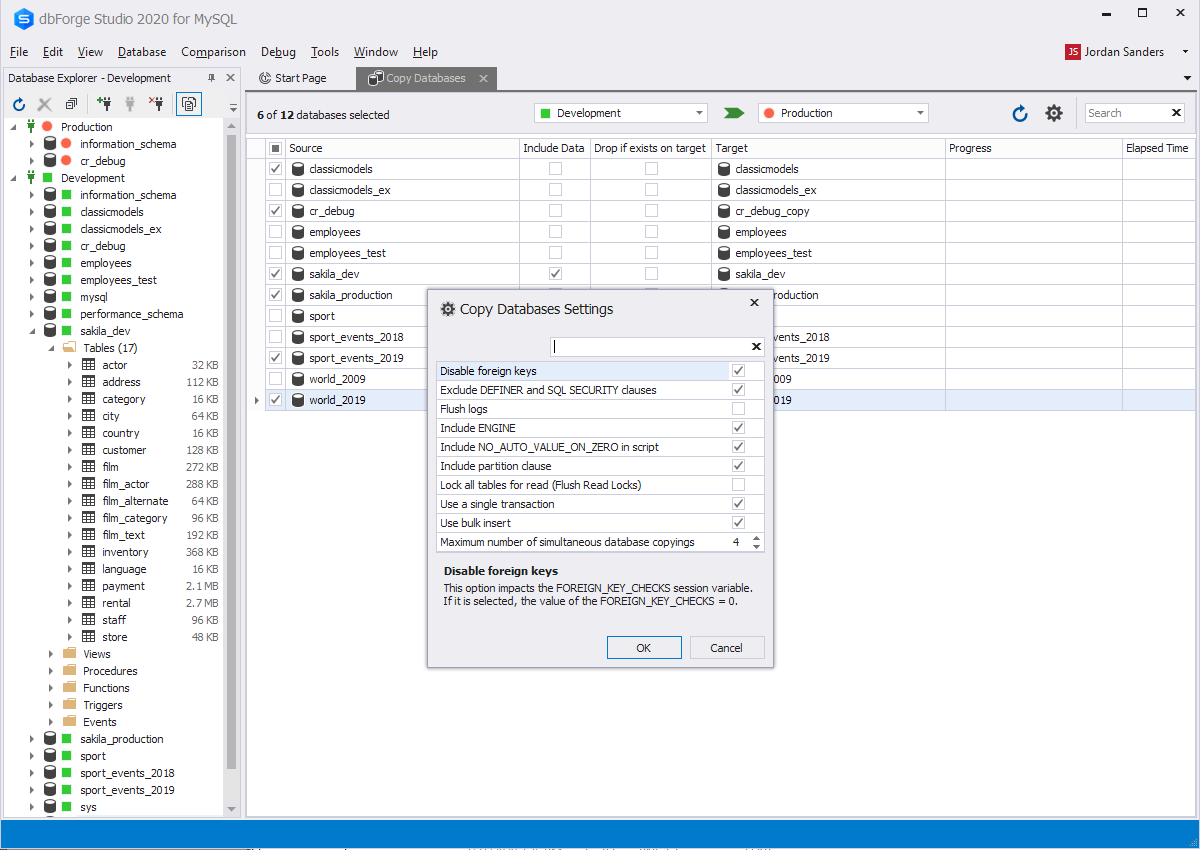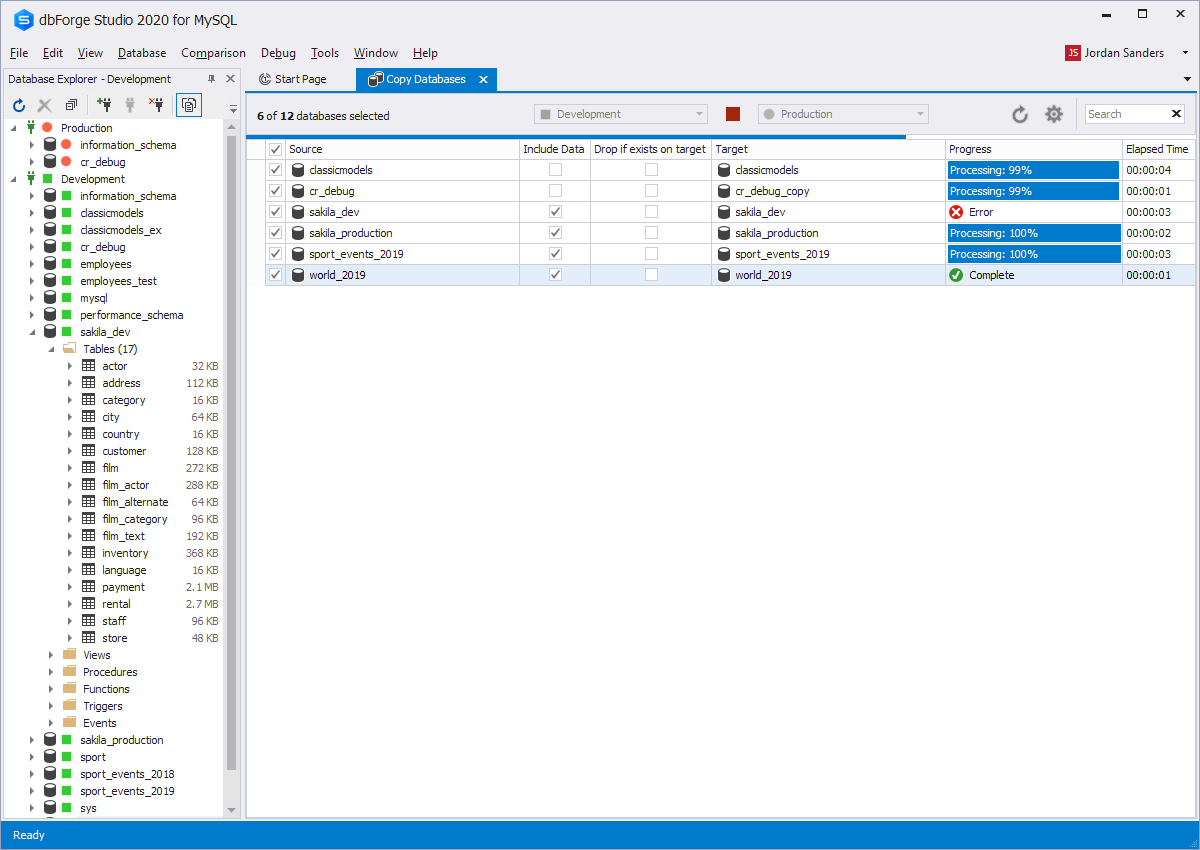Best Way to Copy MySQL Databases
The Copy Databases functionality is the fastest way to create multiple copies of MySQL databases in a short period of time.
Copy Databases is an essential feature of Devart's MySQL IDE that helps you move MySQL databases between different servers with a maximum speed. As a MySQL administrator, you will surely benefit from the tool as it provides the fastest and easiest way to copy database structure and data from source to target servers.
- Select source and target servers
- Specify databases to copy
- Select whether to copy the contained data
- Drop a database if it already exists on the target server
- Configure the parameters of database copying
- See the time and progress of copying in percents and abort the copying in case of need



